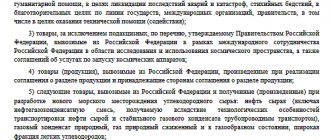Investment greetings, friends! If you decide to buy shares of Polymetal, X5 Retail Group or Rusal, you will find that these same shares are not listed on the Moscow Exchange, and instead they are traded in GDRs - global depositary receipts. If you decide to buy shares of MTS or Tinkoff, you will find that there are both shares of these companies and depositary receipts in circulation. What are GDRs and ADRs, how do they differ from the shares we are used to and is it worth buying them?
What are depository receipts and how did they appear?
In order to combat the outflow of capital and other good goals, in the 19th century, provisions began to be introduced into the legislation of individual countries prohibiting the free circulation of foreign securities, as well as the export of native domestic shares. For example, in the UK they introduced a ban on the export of shares of national companies, and in the USA they banned the circulation of everything foreign.
American investors, who were dreaming of how to buy shares of British companies, solved the problem elegantly. They simply created an intermediate financial instrument - a depositary receipt. It was not a security in the classical sense, but certified the investor’s ownership of one or more shares or bonds of a foreign company . At the same time, the share/bond itself physically remained in the country from where its export is prohibited.
The first depository receipts were developed by the American bank Morgan Guaranty for shares of the English department store chain Selfridges in 1927. They were traded on the New York Stock Exchange. These receipts are called ADRs - American Depository Receipts. The original spelling is also found - ADR, which is an abbreviation for American Depositary Receipts.
Receipts gained great popularity, especially in the era after the Great Depression, when with their help it was possible to diversify your risks across different countries, as well as invest in the rapidly growing economies of developing countries.
When entering other international stocks, GDRs (Global Depositary Receipts) also appeared. This is a collective name for all depositary receipts traded on non-US exchanges.
Thus, a depository receipt is a secondary security issued in the form of a certificate and certifying the right of its owner to own a certain amount of the underlying asset (shares or bonds) of a foreign issuer. At the same time, the share or bond itself is physically located in the depository bank and does not change its “citizenship”. With the help of DR, investors can invest in foreign securities without violating current legislation.
Despite the fact that, from the point of view of the law, ADRs and GDRs are not securities, their owner receives all the rights of a shareholder - he can receive dividends (or coupons in the case of bonds), vote at a meeting, receive corporate information, etc.
ADR
The main objective of ADR is to bring the delivery of dangerous goods to a single standard and increase the safety of road transport, which would allow the unhindered transit of hazardous substances through the countries participating in the agreement.
The agreement was supported by several countries that are not members of the European Community. ADR includes the agreement itself and contains 2 annexes:
Adj. A – General definitions and provisions relating to dangerous goods;
Adj. B – Definitions applicable to transport equipment and transport operations.
These additions are periodically reviewed by the international working group WP17 WP18 at meetings once every couple of years, approved and published. Version of ADR 2021 2021 is valid from O1.O1.19 and will be applied until 3O.O6.21. From 01/01/2021, the new edition of ADR 2021 will be valid.
When transporting hazardous materials, situations are possible when ADR requirements are not relevant, and, therefore, compliance with ADR standards in terms of markings and danger signs, packaging and documentation is not necessary.
The principles of ADR 2021 2021 are not valid for transport:
— vehicles with a maximum speed of less than 40 km per hour;
— vehicles of the Russian Army;
— private traders of goods with danger for their own needs in retail packaging;
— flammable liquids in containers (canisters) for repeated use with a volume of up to 60 liters. in total no more than 24 O liters per car;
— mechanical units, the equipment of which contains hazardous substances;
— hazardous substances that are formed as secondary products during the main production process of the organization,
— hazardous substances by rescue and emergency response services;
— gaseous substances inside car tanks;
— gaseous substances of groups A and O at a pressure of no more than 2 bar and t=20 C;
— gaseous substances in vehicle installations;
— fuel in tanks is no more than 15OO liters. for one vehicle;\
— fuel in the tanks of transported vehicles and units;
— empty, uncleaned containers from under goods II, III, 4.1, 5.1, 6.1, VIII, IX.
However, it should not be forgotten that there are a number of hazardous substances that have been excluded from the ADR list.
What is the difference between GDR, ADR, RDR and other receipts?
So, in the USA, depositary receipts of foreign issuers are called ADR - American Depositary Receipt .
If the receipt is traded on any other exchange, then it is called GDR (Global Depositary Receipt). If a given DR is traded on a European exchange, it is sometimes called a Euro-GDR.
But in general, European depositary receipts are called EDRs - they are issued by Citibank jointly with the Paris Stock Exchange.
Japanese depositary receipts are called JDR , they are issued by the same Citibank together with Mitsubishi UFJ Trust and Banking Corporation.
There are also Russian depositary receipts - RDR . More precisely, they were. In 2010, a pilot issue of RDRs for US Rusal shares was launched on the Hong Kong Exchange, but in 2021, due to low liquidity, they were delisted. But both shares and RDR of Rusal are traded on the Moscow Exchange. In general, there are now more than two dozen RDRs traded on Russian stock exchanges, mostly by Russian companies.
Interestingly, in accordance with our legislation, foreign companies do not need to issue depositary receipts when entering the Russian market. “Foreigners” can completely legally list their shares on the St. Petersburg Stock Exchange, and Russian investors can buy them without having to open an account with a foreign broker or obtain the status of a qualified investor.
Why do issuers issue ADRs and GDRs?
In the 90s of the 20th century, hundreds and thousands of depositary receipts of various companies appeared on the market. This boom arose, firstly, due to increased demand for foreign assets, mainly for shares of developing countries with great growth potential, secondly, due to the globalization of the economy and, thirdly, due to the technical feasibility - online trading, after all!
For companies that issue ADRs and enter the American market, there are many advantages, especially if their receipts are admitted to trading on the exchange, and not on the over-the-counter market (where most DRs are traded). I will list just a few of them:
- attracting new investors and capital, because American exchanges are the largest both in terms of capitalization and number of participants;
- increasing the prestige of the company, because it becomes international;
- increasing the company's capitalization due to the rise in price of shares, which opens up opportunities for preferential lending, hiring the best top managers, additional protection from takeovers and influence from large investors (and in general: large capitalization is cool);
- increasing the liquidity of shares, because there are more of them in circulation;
- the possibility of increasing the company's authorized capital through an SPO.
In short, the issue of ADRs and GDRs for a company is a step that significantly increases its prestige and ability to attract capital by entering foreign markets.
Types of ADR
All American depositary receipts are divided into two types:
- sponsored (sponsored) – the main type of depository receipts, more about them below;
- non-sponsored (non-sponsored) - these types of DR are not allowed on the organized market (exchange), but are traded only on OTC (Over-the-counter market) markets and are quoted in “Pink sheets”.
Here's another interesting article: Why do public companies benefit from high stock prices?
Unsponsored receipts are purchased mainly by large investors manually, usually by prior agreement. An ordinary investor, especially from Russia, does not have access to such ADRs.
Sponsored ADRs are divided into 4 types:
ADR1. They are issued against the company's existing shares. They have a simplified procedure for entering the market, and in order to deposit them, the company does not need to bring its reporting to American standards US GAAP. These ADRs are not publicly traded on US exchanges, but only in the over-the-counter market, just like unsponsored ADRs. Their prices are published in the already mentioned Pink sheets and on the Bulletin Board. In addition, these ADRs can be distributed on European exchanges, so part of ADR1 also has GDR status.
ADR2. These types of receipts are also issued for shares that have already been issued, but the companies that issued them provide reporting to the SEC in accordance with US GAAP standards. In this regard, these types of receipts can be quoted on public exchanges, in particular on the NYSE, AMEX and NASDAQ exchanges. It should be noted that in fact there are not so many ADR2s, since the SEC imposes the same requirements on companies as when issuing ADR3. Therefore, it is easier for companies to immediately issue ADR3 and increase their capitalization.
ADR3. Unlike ADR2, these types of depositary receipts are issued not for issued, but for newly issued shares (i.e. shares that go into circulation for the first time). This is a kind of analogue of an IPO. Typically, these ADRs are issued to increase the company's capital. The US Securities and Exchange Commission imposes the most stringent requirements on such issuers. These ADRs are public and traded on major US exchanges.
ADR4 . These are another closed-end ADRs, they are privately placed in accordance with Rule 144A of US stock exchange laws. They are intended for purchase only by qualified investors and are traded on the Nasdaq exchange in the PORTAL (Private Offerings, Resales and Trading through Automated Linkages) system.
Russian companies most often issue depository receipts of levels 1 and 4, i.e. ADR1 and ADR4, since they report according to IFRS standards, and not US GAAP. However, on Nasdaq you can freely buy ADRs of levels 2 and 3 of Russian companies such as Qiwi, Yandex, VEON, and ADRs for shares of Mechel and MTS are traded on the New York Stock Exchange.
At the same time, on European exchanges the requirements for companies wishing to issue GDRs are lower, so Russian companies are more willing to list on European exchanges.
Thus, on the London Stock Exchange you can buy GDRs for shares of Mail.ru, Polymetal, TCS Group, Etalon, Evraz, Gazprom, Lenta, LSR, Novatek, Norilsk Nickel and many others. GDRs for shares of Surgutneftegaz, Sberbank, Mosenergo, Lukoil, Gazprom and Gazprom Neft are traded on the Frankfurt Stock Exchange in Germany.
Dangerous goods
Dangerous goods are materials or substances that potentially threaten the environment, human health or life, as well as material assets.
In total, according to the UN classification, there are 9 classes of dangerous goods. This includes explosives, poisonous gases, and other substances and materials. Each class has its own way of marking. Detailed information about labeling, containers, packaging and classes of dangerous goods is here.
Having a problem? Call our customs specialist:
8-495-565-32-46
Transportation of dangerous goods - types of transport
Dangerous goods can be transported in different ways. The choice of a particular one depends on the destination, the class of dangerous goods, the overall budget, and agreements between both parties. There are several main types of transportation:
- Transportation of dangerous goods by rail . It has an increased level of security and relative financial accessibility. If there is a need to transport a large shipment, the railways will solve this problem. You can set an exact date for cargo delivery, since trains have a precise schedule. At the same time, railway transport is not very fast. It is necessary to understand the rules for transporting dangerous goods by rail, obtain permission, and obtain insurance.
- Road transportation of dangerous goods . The method is distinguished by high transportation speed. At the same time, he is quite democratic. Ideal for transporting small consignments over short distances. However, transportation by road has its limitations. In particular, it is not suitable for transporting large quantities of cargo. When organizing such transportation, it is important to take weather conditions into account. In addition, road transport is associated with various dangers: theft, accidents, and so on. There are special requirements for such transportation. If you are interested in the rules for transporting dangerous goods by road, take a look here.
- Air Transport . Features maximum transportation speed. Suitable for operational intercontinental transportation. Among the disadvantages of air transportation are the high cost and the average level of cargo safety. In addition, it will not be possible to transport large consignments or oversized cargo by air transport.
- Transportation of dangerous goods by sea . It is distinguished by the greatest democracy in terms of cost, as well as high security. Allows you to transport large quantities of cargo. At the same time, when organizing sea transportation, weather conditions must be taken into account. To prepare for transportation, you must first familiarize yourself with the rules for the maritime transportation of dangerous goods, carry out appropriate packaging, and complete all required documents and permits.
An ADR permit is required to transport dangerous goods.
Before choosing a transportation method, you should study the features of each of them, and then relate the obtained data to your individual situation. For example, if you require high speed, you can choose air transport. If you need to transport a large consignment of cargo, it is better to pay attention to transportation by rail.
How are depositary receipts issued?
In order to issue ADRs on shares, the company must enter into an agreement with any large depository bank (this bank will keep records of ADR holders). Most often, issuers turn to The Bank of New York Mellon, which owns almost half of the market, and Citibank.
Next, the company needs to find a custodian bank that will hold the shares, i.e. will be the nominee shareholders. Major players in this market have succeeded: ING Bank and Credit Suisse. It is often practiced that the same bank is both the depository and the custodian.
In general, the scheme for issuing depository receipts works like this:
- the company has a depository bank and custodian who will organize the issue of DRs and store the deposited shares;
- the company collects documents and submits them for approval to the regulator - in the case of ADR this is the SEC, in the case of Russia - the Central Bank;
- if the decision to issue receipts is approved, the company begins to conduct a “road map” (Road Show), similar to marketing for an IPO, attracting interest in the issue of receipts from large investors, brokers, analysts, banks and other market participants;
- receipts are issued and made available to buyers, while transactions are registered not on the stock exchange, but in a depository bank, with the participation of a broker, who deposits the shares in this bank;
- receipts are supplied to the secondary market from owners if they agree to sell them.
And here’s another interesting article: How to make money on dividends: rules for buying shares
It happens that a large buyer is interested in purchasing a volume of ADR or GDR that is simply not available on the exchange. In this case, the procedure is as follows:
- the buyer contacts his broker and orders the required purchase volume from him;
- a foreign broker contacts a Russian broker, who finds shares on the local market;
- a Russian broker with the required number of shares contacts the custodian bank;
- the custodian bank buys shares and is registered in the register of shareholders as a nominal holder of securities;
- the bank sends to the depository an order to issue ADR / GDR in the quantity required for the foreign buyer;
- the depository issues the required number of DRs;
- the bank, with the help of a trust company, transfers receipts to a foreign broker;
- he registers them with the clearing center and transfers them to the client’s account.
In this case, the shares themselves end up physically in Russia; only the right to own them is transferred. It's a bit like renting - the house itself physically remains in place, but the right to live in it is transferred to different owners.
What is an ADR certificate (ADR) and who needs it?
return to section
February 12, 2021
3200
We begin to “Google” some information only when it directly concerns us. But let’s now talk about the strange ADR certificate, what is it and does an international driver even need to have it in his arsenal?
ADR Certificate (ADR)
ADR certificate (ADR) is a document that allows the driver to transport dangerous goods. The strange letters ADR is an abbreviation that stands for “Road Transport of Dangerous Goods”. What can be considered dangerous goods? This is any cargo that can harm not only the environment as a whole, but also human health. The driver, when transporting such cargo, must have a permit with him. It looks like an ordinary plastic card, which contains all the information about the driver: full name, series, document number. There is also a photograph of the owner, the country in which he lives, date of birth, as well as the place in which the certificate was issued. There must be a date there, or rather the period for which it is issued.
Do drivers who are not transporting dangerous goods ADR
Transport organizations often talk about the facts of control on the territory of EU member states of compliance with the provisions of the European Agreement concerning the International Carriage of Dangerous Goods by Road when transporting fuel in fuel tanks.
If the capacity of fuel tanks of vehicles exceeds the maximum values defined in ADR (1500 liters), then the fuel transported in such vehicles is considered dangerous goods. Such transportation must be carried out in compliance with the requirements of paragraph 1.1.3.6 of ADR and, accordingly, the following must be ensured:
— the driver must undergo special training in the transportation of dangerous goods; — marking of the vehicle with orange plates; — written instructions, transport document and certificate of approval; vehicles for the transportation of certain dangerous goods; — additional equipment for vehicles transporting dangerous goods, etc.
How to obtain an ADR ?
Drivers who are at least 21 years old and have a driving experience of at least 3 years in driving a power-driven vehicle are accepted for training. During the courses, students learn:
— information about the types of dangerous goods in more detail;
— technical support for the transportation of dangerous goods;
— requirements for drivers transporting dangerous goods;
— driver actions in case of damage to containers, packaging, accidents, forced stops and other emergency situations;
— what needs to be done in case of an emergency, for example, if a fire occurs or someone gets hurt from the cargo, etc.
Procedure for issuing a certificate
You can receive a document only after completing training and successfully passing exams. Do not run at the first advertisement, it is important to check that the institution is licensed, otherwise you may receive a fake certificate and subsequently be left without money and without work.
By the way, the entire training lasts 1-1.5 weeks. It will take about another week to issue a plastic card, so you won’t need to spend much time. The only documents needed are a passport, driver's license and a 3x4 photograph. The cost of training at the Salva Driving School is 100 rubles. At the end of the course, an exam is taken at Gospromnadzor.
A permit is given for a period of five years, the date is written on the plastic. After this, the period will need to be extended, and this can be done by passing re-certification. Remember that drivers of all companies involved in the transportation of dangerous goods must undergo such training. If the requirements are neglected, the company or the driver himself will face trouble and worse, if someone gets hurt as a result.
When can I register for the course?
Driving school "Salva" is constantly recruiting for ADR courses. Groups are formed approximately at intervals of two weeks. the next group for February 17th.
URGENT DELIVERY!!!
- Category “B” (600 rubles)
Evening group:
- classroom on Sovetskaya street, 129
(theory: Tuesday, Thursday at 18.00 )
- classroom on Ordzhonikidze street, 100d
(theory: Monday, Friday at 18.00 )
Morning group:
- classroom on Sovetskaya street, 129
(theory: Tuesday, Thursday at 08.30 )
- Retraining from “B” to “C” (450 rubles)
- Retraining from “C” to “CE ” (490 rubles)
- Retraining from “B” to “ D ” - 900 rubles (category “C” as a gift!)
- Transportation of dangerous goods (A DR ) (100 rubles) . Starts February 17th!
We also recruit for the following groups:
- Category “B” Classroom on Ordzhonikidze St. 100d (evening group and weekend group)
- Classroom on Sovetskaya street 129 (morning, evening and weekend groups)
- Classroom on Priberezinsky Blvd. 33a (evening group and weekend group)
- Retraining from “C” to “D” (600 rubles)
- International cargo transportation (80 rubles training + 30 card)
HOW TO CONTACT US
In order to sign up for training at the Salva driving school :
- call or write to one of the numbers: +375 (225) 70-87-08 | +375 (44) 570-84-08
- write to us by email: [email protected]
- send a message directly on the website: https://avtosalva.by/
Call any time, seven days a week!
We are on social media networks:
@avtoshkola_salva_bobruisk
ok.ru/profile/570273069581
SALVA.
Driving school SALVA. Driving school
Pros and cons of ADRs and GDRs for a private investor
Investors purchasing GDRs and ADRs receive a number of benefits:
- access to high-yield securities of developing countries that cannot be bought in any other way, which allows you to earn significantly higher than the market;
- receiving large dividends - significantly higher than in dollars;
- the possibility of country and currency diversification, which allows you to assemble a global portfolio of assets that do not correlate with each other at all;
- reduction of currency risks;
- avoidance of double taxation;
- significantly lower commissions than when purchasing foreign shares through a foreign broker;
- the opportunity to trade within one’s own legal framework without entering foreign markets, which is attractive, for example, for military personnel and government officials who cannot buy foreign securities.
In addition, another plus is that if suddenly the country in which the joint-stock company is registered decides to close its market to foreign investors, then the owners of depositary receipts will not have to do anything. Owners of shares will either have to get rid of the securities or bother getting receipts for them.
Speculators can “play” on the price difference between the DR and the underlying asset, since sometimes there is significant desynchronization in the markets.
If you don’t understand how arbitrage works in different markets, then don’t bother with it - this method is suitable for seasoned speculators and is contraindicated for beginners.
There are no downsides to owning depository receipts as such. More precisely, this tool itself does not have any disadvantages in itself - there are continuous advantages











